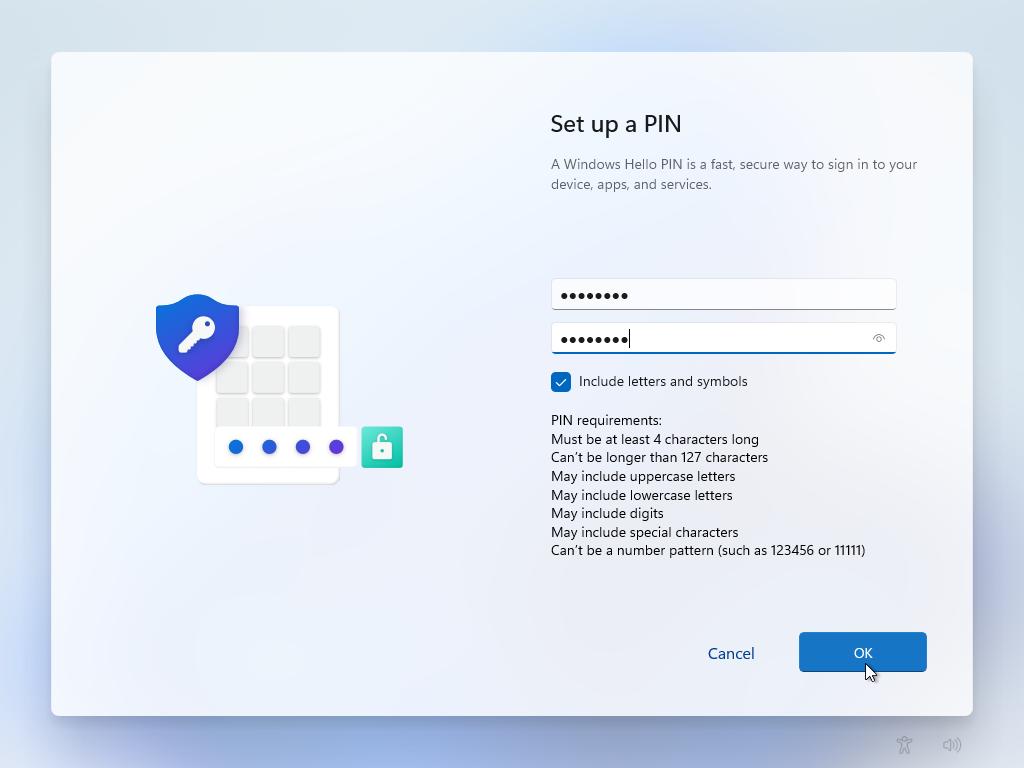Giving Windows 11 a Try? How to Set Up and Customize Your Installation
Microsoft offers an Insiders Preview of Windows 11 for anyone who wants to test the next version of Windows before its final release on Oct. 5. But installing the new OS is only half the battle. After installation, you need to go through a host of setup screens to customize and configure Windows 11 the way you want it. You’d also run through these setup screens if you reset your PC as a way to reinstall Windows 11 in the event of any glitches.
The overall setup process is similar to that of Windows 10, but there are a few surprises. Here’s how to customize Windows 11 during setup.
Initial Setup
First, you’ll need to download and set up Microsoft’s ISO file for Windows 11. Then you install Windows 11 via your preferred method—a dedicated PC, a dual-boot system, or a virtual machine. Follow the on-screen instructions to install the OS, at which point the setup screens will appear. You will be asked to designate your country or region, followed by keyboard layout or input method. Confirm the correct ones and click Yes.
The next screen asks if you want to add a second keyboard layout. If you plan to add another language in Windows 11 with a different keyboard layout, click Add layout and choose the one you want. Otherwise, click Skip.
Windows then checks for any available updates. Review the license agreement and click Accept. You are then asked to name your Windows 11 PC; Microsoft offers up a few guidelines and requirements. The name can’t start with a number or be longer than 15 characters. It can’t include any spaces or certain special characters.
If you plan to install Windows 11 on just one PC or one place, you can go with a generic name, such as Windows11 or Win11Preview. If you’ll be installing it on multiple computers or places, give it a more unique name with the PC make or model, such as Win11LenovoT14 or Windows11HP. After typing the name, click Next.
Select Account Type
You are then asked what type of account you want to use. Choose Set up for personal use if you’re installing Windows 11 on your own personal PC and plan to use it with a Microsoft account or a local account. If you’re installing Windows 11 on a PC for your organization or school and plan to use it with your business or school account, select Set up for work or school. Once you make a choice, click Next.
If this PC is for personal use, you will then need to enter the email address for your Microsoft account. A local account is no longer supported for Windows 11 Home edition (without some serious workarounds), but it will still work with Windows 11 Pro and other editions.

4.5Outstanding$99.99 at DellSee It4.0Excellent$43.99 at AmazonSee It3.5Good$61.99 at AmazonSee It4.0Excellent$349.99 at AmazonSee It3.5Good$129.99 at Microsoft StoreSee It4.0Excellent$34.99 at AmazonSee It4.0Excellent$52.99 at AmazonSee It4.5Outstanding$16.99 at AmazonSee It See all (8 items)
Set Up With a Microsoft Account
If you’re signing in with a Microsoft account, enter the email address and password associated with it. If you don’t have a Microsoft account, click Create One and follow the steps to create it.
Once the Microsoft account is entered, you are then prompted to create a PIN as an alternative means of signing into Windows beyond just your Microsoft account. Click Create PIN.
Check the box next to Include letters and symbols if you want to use more than just numbers for your PIN. (The PIN requirements link offers guidelines for creating a PIN.) Type and then retype your PIN and then click OK.
If your account has already installed and set up Windows 11 on a different PC, Microsoft will recognize you and ask if you want to restore Windows from the other PC or set it up as a new device. If you wish to duplicate the environment from another computer, choose Restore from [PC name]. If you’d rather keep your new Windows 11 environment fresh and unique, choose Set up as new device. After choosing, click Next.
The next screen asks you to choose your privacy settings. Read each setting to determine whether you want to keep location and diagnostic data enabled or disable it (click the Learn more link for details on these options). After choosing which settings to change, click Accept.
You can then customize your experience by choosing how you plan to use Windows—Entertainment, Gaming, School, Creativity, Business, or Family. The choice you make determines what types of ads and recommendations you may see associated with your Microsoft account. Click a specific category if you wish; otherwise click Skip.
Your next step is to determine whether or not you wish to back up your files to OneDrive. To automatically back up and sync your Desktop, Documents, and Pictures folders to OneDrive, select Back up my files with OneDrive. Otherwise, pick Don’t back up my files. Click Next.
Set Up With a Business or School Account
If you selected an account with your business or school, the process jumps from the authentication screen to the privacy settings screen. From there, a screen pops up asking if you want to set up Windows Hello with your account. Click OK.
You’re asked to set up a PIN. Type and then retype a PIN, then click OK. You can then set up any other supported Windows Hello feature, such as fingerprint recognition or facial recognition.
Can My PC Run Windows 11?How to Enable Dark Mode in Windows 11Keep It Tidy: How to Use Snap Layouts in Windows 11Set Up With a Local Account
If you prefer to use a local account, click the Sign-in options link at the screen prompting you to add your Microsoft account. At the next screen, click the Offline account option.
Windows does its best to try to steer you into using a Microsoft account, even going so far as to use confusing language to trick you and explain what you’ll miss out on if you proceed. Click Skip for now to continue setting up a local account.
You will then be asked to enter the name you wish to use and create a password for the account. Ignore Microsoft’s prompts to set up an online account.
Windows then prompts you to create security questions and answers for your local account. Choose each security question and then type an answer. Click Next at each screen.
The next screen asks you to choose your privacy settings. Enable the settings you wish to change and click Accept.
Finalize Setup
The process converges from here, whether you chose a Microsoft account, local account, or account for work or school. Windows will check for available updates and download them for you. While this process runs, Microsoft will go through some of the new features in Windows 11.
Once the update process is finished, Windows will restart, welcome you to the new version of the operating system, and automatically sign you in. The next time you start or reboot your computer, you’ll be prompted to type your password at the login screen to sign in.
Sign up for Tips & Tricks newsletter for expert advice to get the most out of your technology.
EmailThis newsletter may contain advertising, deals, or affiliate links. Subscribing to a newsletter indicates your consent to our Terms of Use and Privacy Policy. You may unsubscribe from the newsletters at any time.
Thanks for signing up!Your subscription has been confirmed. Keep an eye on your inbox!








